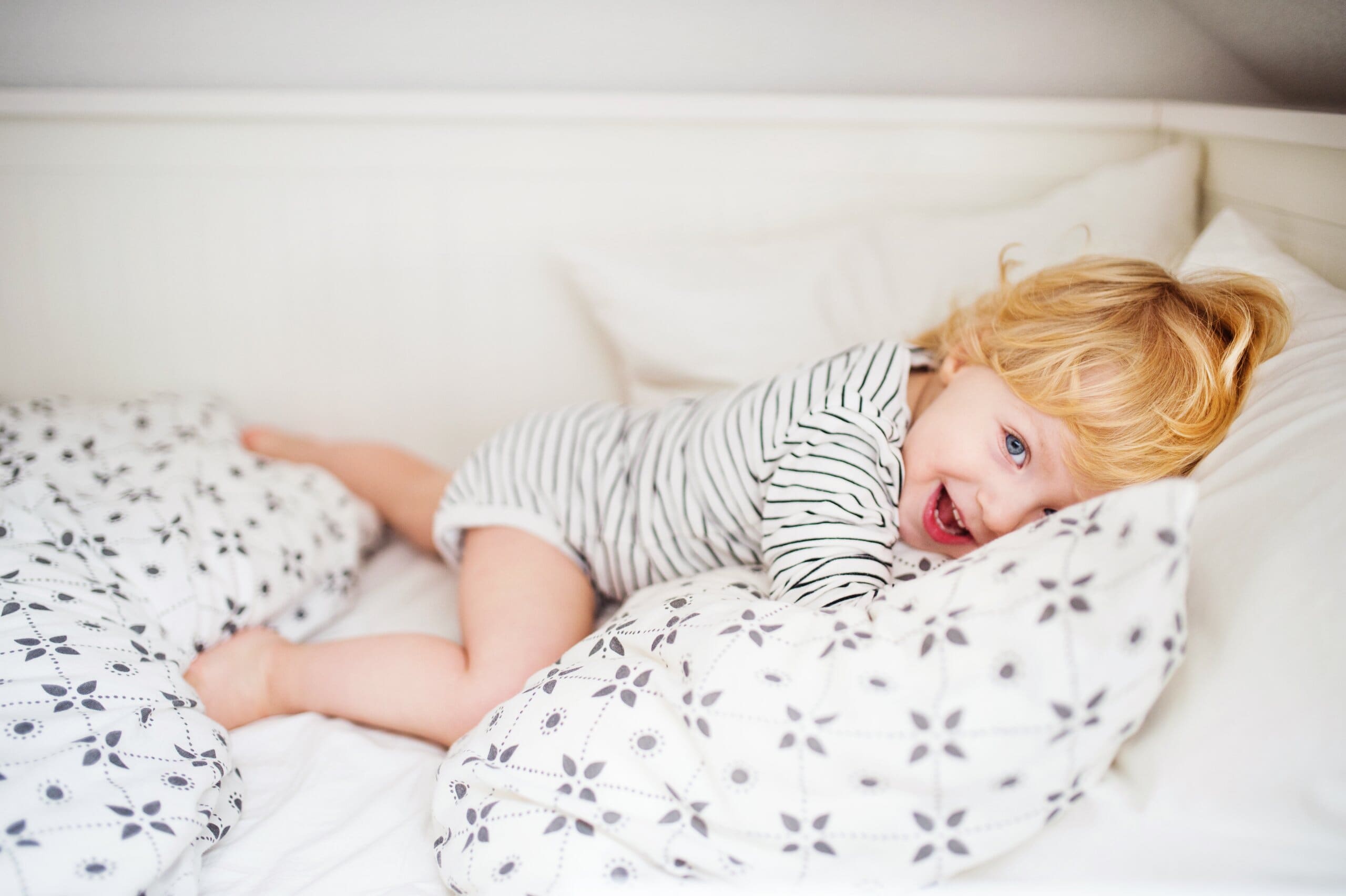While it is normal for toddlers to require a nappy at night, you might think your toddler or preschooler is ready to transition away from nappies. Don't worry - there are several things you can do to keep them comfortable and still protect your bedding from accidents.

Spotting the signs that they are ready
According to the Children's Bowel and Bladder Charity, ERIC, research shows the best time to transition away from nappies is before 30 months (2.5 years old). However, this is not the case for all children. Some even require nappies in the first few months of school - and this is perfectly ok.
Signs that your toddler or preschooler might be ready for this next step are:
- They are staying dry during the day. Toddlers who have dry nappies all day, or don't use daytime nappies anymore, are normally ready to begin night time periods without an aid.
- They are confident using a toilet or potty.
- They know how to pull down their trousers or remove other clothing necessary to use a toilet or potty.
- They have the communication skills to vocalise a need to go to the toilet.
- Self awareness of when they need to use the toilet has been demonstrated (for example, they give you a warning sign or can verbalise this).
Resources for parents
Before you attempt a night without nappies, parents can ensure they have all the basics covered.
Here is what you’ll need:
- A mattress protector - this will help reduce the risk of urine damaging their toddler mattress beneath the sheet. You can find a range of mattress protectors at MattressNextDay.
- Spare sheets - It is likely your child might have an accident in the night requiring a quick change of duvets or sheets.
- Easy access to a potty or toilet - If you do not have easy access to a toilet, you should put a potty in the child’s bedroom or in the hallway for them to access at night.
Tips for sleep training without a nappy
There are several ways you can effectively support your toddler or preschooler during the transition to a nappy-less bedtime.
- Communicate. Tell your child that they are going to try sleeping without a nappy and reassure them that they are not in trouble if they wet the bed.
- Keep plenty of spare sheets, towels and clothes nearby for late night sheet changes.
- Stay calm and patient and remember that this is just a phase that won’t last long.
- Have a night light in the room so that your child can find their way to the bathroom or potty.
- Change the bedding regularly and wash the mattress protector to avoid bad smells or unhygienic sleeping conditions.
- Give them sufficient water during the day, but less in the evening before bed.
- Help them use the toilet right before bed and first thing in the morning. This creates a healthy routine.
Keeping the toddler bed clean
If your toddler or preschooler has wet the bed, don’t panic. Most laundry detergents are strong enough to remove fresh urine from bedding as long as it is new.
You can also use an enzyme cleaning spray to remove any urine odours. If you don’t have any, you can mix bicarbonate of soda or baking powder with water and vinegar and soak the sheets in this mixture before putting it through a normal wash.
It is best not to use a mattress topper when encouraging a child to sleep without a nappy. Mattress toppers are harder to clean and often too big for normal washing machines. However, as soon as your child is dry for a few weeks, you can certainly put the mattress topper back onto the bed.
A mattress protector, however, is critical for sleep training because it prevents your mattress from getting dirty.







